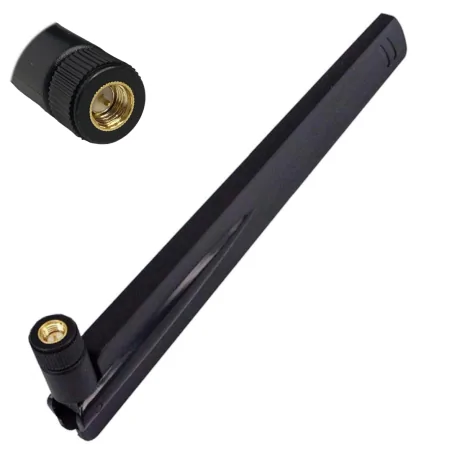

| Zapraszam do kontaktu w przypadku pytań pn-pt godz. 9:00-15:30. Nr telefonu: +48 882 953 094 |






18dBi WiFi Antenna folded with hinge SMA plug face="Arial">
Application:
Leading the antenna outside the device housing, whether the room significantly improves the range and stability of transmission data.
SPECIFICATION
ATTENTION:
Antenna energy gain multiband is given as the sum of the gains for all component bands.
If the antenna is e.g. Dual Band WiFi 2.4/5GHz has a stated gain of 8dBi, it does not mean that this gain is for everyone 2.4GHz and 5Ghz bands. This division is usually not equal to e.g. 4dBi and 4dBi.
Dual Band WiFi 2.4/5GHz antenna with a gain of 8dBi when used only in the 2.4GHz band in reality has lower gain than a 6dBi dedicated antenna only for this band.
Using a Dual Band antenna makes sense when the router is simultaneously supports both bands for different users in different NO
In the case of multi-band antennas with a very wide operating frequency range have a given gain significantly higher than for a single-band antenna. The given numerical value of this gain has the dimension real only when aggregating bands when establishing a logical connection ( 5G technology). In the case of communication on a specific channel, the unit gain is lower.
In order to assess the parameters of the antenna, you should use its frequency response. Consider whether to use an antenna multi-band or dedicated to a specific band.
Popular multiband antennas: